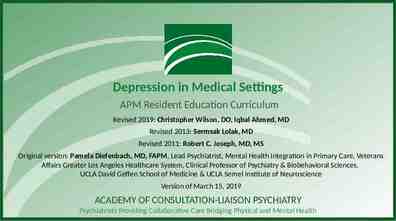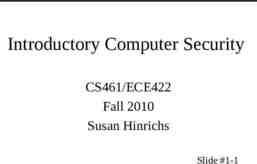Top IT Issues in Higher Education Results from the 2005
73 Slides339.50 KB

Top IT Issues in Higher Education Results from the 2005 EDUCAUSE Current Issues Survey

2005 Survey Measures Which issues: are most important for the institution’s strategic success? have potential to become more significant in the coming year? do senior IT leaders spend the most time on? require the most human and/or financial resources?

2005 Survey Choices Administrative/ERP/information systems Advanced networking Assessment/benchmarking Business continuity/disaster recovery Change management Collaboration/partnerships Converging technologies Data administration Digital library/digital content challenges Digital records management Distance education/virtual universities E-learning/distributed teaching and learning Electronic classrooms/technology buildings Enterprise-level portals Faculty development, support, and training for IT Funding IT Governance, organization, and leadership for IT Infrastructure Instructional/course management systems Intellectual property and copyright management Online customer services Policy development and legislative compliance Remote access Research support Security and identity management Staffing/HR management/training Strategic planning for IT Student computing Support services/service delivery models Web systems and services Other

Findings in This Presentation Top Five Trends 2000–2005 2005 Survey Results and Comparison with 2004 2005 Survey Results—Demographic Detail

Top Five Trends 2000–2005

Survey Measures Recap Which issues: are most important for the institution’s strategic success? have potential to become more significant in the coming year? do senior IT leaders spend the most time on? require the most human and/or financial resources? The vertical lines between issues show their relative aggregate importance to IT leaders.

Critical for Institution’s Strategic Success 2000–2005 Admin/ERP Systems Funding IT Funding IT Funding IT Relative Importance Funding IT Admin/ERP Systems Faculty Dev, Support & Training Admin/ERP Systems Funding IT Funding IT Admin/ERP Systems Faculty Dev, Support & Training Faculty Dev, Support & Training Security& Identity Mgmt; Admin/ERP Systems Security & Identity Mgmt IT Staffing/HR Mgmt Distance Education E-Learning Environments Distance Education Admin/ERP Systems 2000 Security & Identity Mgmt; Infrastructure Mgmt Strategic Planning Security & Identity Mgmt 2001 2002 Faculty Dev, Support & Training Year 2003 Strategic Planning Strategic Planning Faculty Dev, Support & Training Infrastructure Mgmt 2004 2005

Potential to Become More Significant 2000–2005 Funding IT Distance Education Funding IT Distance Education Security & Identity Mgmt Funding IT Security & Identity Mgmt Funding IT Relative Importance Security & Identity Mgmt Security & Identity Mgmt E-learning Environments Admin/ERP Systems Emerging Network Technologies; Security & Identity Mgmt Emerging Network Technologies Enterprise-level Portals Ubiquitous Computing/ Universal Access; E-learning Environments Admin/ERP Systems Admin/ERP Systems Enterprise-level Portals Online Student Services Admin/ERP Systems Enterprise-level Portals Advanced Networking; Funding IT Strategic Planning; Enterprise-level Portals E-Commerce 2000 Strategic Planning Faculty Dev, Support & Training 2001 2002 2003 Year 2004 2005

What Senior IT Leaders Spend Most Time On 2000–2005 Strategic Planning; Funding IT Admin/ERP Systems Funding IT Funding IT Strategic Planning Funding IT Relative Importance IT Staffing/HR Mgmt Admin/ERP Systems Strategic Planning Strategic Planning IT Staffing/HR Mgmt Funding IT Admin/ERP Systems Strategic Planning Strategic Planning; Admin/ERP Systems Admin/ERP Systems Support Services Funding IT; Governance, Organization & Leadership Infrastructure Mgmt IT Staffing/HR Mgmt Support Services Governance, Organization & Leadership Change Mgmt Infrastructure Mgmt Governance, Organization & Leadership Security & Identity Mgmt; Infrastructure Mgmt 2000 2001 2002 2003 Year 2004 2005

Expenditure of Most Human/Financial Resources 2000–2005 Admin/ERP Systems Admin/ERP Systems Admin/ERP Systems Admin/ERP Systems Admin/ERP Systems Admin/ERP Systems Infrastructure Mgmt Infrastructure Mgmt Infrastructure Mgmt Relative Importance Infrastructure Mgmt Infrastructure Mgmt Support Services; Desktop Computing Mgmt Desktop Computing Mgmt Infrastructure Mgmt Desktop Computing Mgmt Support Services Support Services Web Systems & Services IT Staffing/HR Mgmt Advanced Networking Support Services E-learning Environments E-learning Environments 2000 2001 2002 2003 Year Security & Identity Mgmt Security & Identity Mgmt; E-learning Environments; Support Services E-learning Environments Student Computing; 2004 2005 Support Services

2005 Survey Results and Comparison with 2004 Survey response rate: 36% (603) of 1,653 institutions

2005 Survey Choices Recap Administrative/ERP/information systems Advanced networking Assessment/benchmarking Business continuity/disaster recovery Change management Collaboration/partnerships Converging technologies Data administration Digital library/digital content challenges Digital records management Distance education/virtual universities E-learning/distributed teaching and learning Electronic classrooms/technology buildings Enterprise-level portals Faculty development, support, and training for IT Funding IT Governance, organization, and leadership for IT Infrastructure Instructional/course management systems Intellectual property and copyright management Online customer services Policy development and legislative compliance Remote access Research support Security and identity management Staffing/HR management/training Strategic planning for IT Student computing Support services/service delivery models Web systems and services Other

Critical for Institution’s Strategic Success 1. Funding IT 2. Security and identity management 3. Administrative/ERP/information systems 4. Infrastructure 5. Strategic planning for IT 6. Faculty development, support, and training 7. E-learning/distributed teaching and learning 8. Governance, organization, and leadership for IT 9. Enterprise-level portals 10.Web systems and services

Potential to Become More Significant 1. 2. 3. 4. 5. 6. Security and identity management Funding IT Administrative/ERP/information systems Enterprise-level portals Strategic planning for IT Faculty development, support, and training for IT 7. Infrastructure 8. Business continuity/disaster recovery 9. E-learning/distributed teaching and learning 10.Web systems and services

What Senior IT Leaders Spend Most Time On 1. Funding IT 2. Strategic planning for IT 3. Administrative/ERP/information systems 4. Infrastructure 5. Governance, organization, and leadership for IT 6. Security and identity management 7. Change management 8. Staffing/HR management/training 9. Support services/service delivery models 10.Policy development and legislative compliance

Expenditure of Most Human and/or Financial Resources 1. Administrative/ERP/information systems 2. Infrastructure 3. Security and identity management 4. Support services/service delivery models 5. Electronic classrooms/technology buildings 6. Student computing 7. Web systems and services 8. Instructional/course management systems 9. Advanced networking 10.Funding IT

Critical for Institution’s Strategic Success 2004 2005 1. Funding IT 2. Administrative/ERP/information systems 3. Security and identity management 4. Strategic planning for IT 5. Faculty development, support, and training 6. Infrastructure 7. E-learning/distributed teaching and learning 8. (tie) Enterprise-level portals; Web systems and services 9. (tie) Business continuity/disaster recovery; governance, organization, and leadership for IT 1. Funding IT 2. Security and identity management 3. Administrative/ERP/ information systems 4. Strategic planning for IT 5. Infrastructure 6. Faculty development, support, and training 7. E-learning/distributed teaching and learning 8. Governance, organization, and leadership for IT 9. Enterprise-level portals 10.Web systems and services

Potential to Become More Significant 2004 2005 1. Funding IT 2. Security and identity management 3. Administrative/ERP/ information systems 4. Strategic planning for IT 5. Enterprise-level portals 6. Faculty development, support, and training for IT 7. Business continuity/disaster recovery 8. Infrastructure 9. (tie) Support services/service delivery models; Web systems and services 1. Security and identity management 2. Funding IT 3. Administrative/ERP/ information systems 4. Enterprise-level portals 5. Strategic planning for IT 6. Faculty development, support, and training for IT 7. Infrastructure 8. Business continuity/disaster recovery 9. E-learning/distributed teaching and learning 10.Web systems and services

Most Time-Consuming for Senior IT Leaders 2004 2005 1. Funding IT 2. Strategic planning for IT 3. Administrative/ERP/information systems 4. Governance, organization, and leadership for IT 5. Infrastructure 6. Security and identity management 7. Change management 8. Staffing/HR management/training 9. (tie) Policy development and legislative compliance; support services/service delivery models 1. Funding IT 2. Strategic planning for IT 3. Administrative/ERP/ information systems 4. Infrastructure 5. Governance, organization, and leadership for IT 6. Security and identity management 7. Change management 8. Staffing/HR management/training 9. Support services/service delivery models 10.Policy development and legislative compliance

Expenditure of Most Human and/or Financial Resources 2004 2005 1. Administrative/ERP/information systems 2. Infrastructure 3. Security and identity management 4. Support services/service delivery models 5. Electronic classrooms/technology buildings 6. Student computing 7. Web systems and services 8. Instructional/course management systems 9. Funding IT 10.Staffing/HR management/training 1. Administrative/ERP/ information systems 2. Infrastructure 3. Security and identity management 4. Electronic classrooms/technology buildings 5. Support services/service delivery models 6. Student computing 7. Web systems and services 8. Instructional/course management systems 9. Advanced networking 10.Funding IT

2005 Survey Results Demographic Detail

Demographic Groups Included Governance – Public – Private Carnegie classification – Doctoral/research: doctoral/research universities intensive doctoral/research universities extensive – Master’s: master’s colleges and universities master’s colleges and universities II – Baccalaureate: baccalaureate colleges–liberal arts baccalaureate colleges–general baccalaureate/associate’s colleges – Associate’s colleges: community and other two-year colleges – International: non-U.S. institutions Enrollment size – – – – Small (fewer than 2,000) Medium (2,000 to 7,999) Medium-large (8,000 to 17,999) Large (18,000 )

Issues Critical for Institution’s Strategic Success

1. 2. 3. 4. 5. 6. 7. Critical for Institution’s Strategic Success—Small Institutions Funding IT Administrative/ERP/information systems Faculty development, support, and training for IT Security and identity management Strategic planning for IT Infrastructure (tie) E-learning/distributed teaching and learning; Web systems and services 8. Electronic classrooms/technology buildings 9. (tie) Instructional/course management systems; enterprise-level portals

Critical for Institution’s Strategic Success—Medium Institutions 1. Funding IT 2. Security and identity management 3. Administrative/ERP/information systems 4. Strategic planning for IT 5. Faculty development, support, and training for IT 6. Infrastructure 7. E-learning/distributed teaching and learning 8. Web systems and services 9. Enterprise-level portals 10.(tie) Business continuity/disaster recovery; electronic classrooms/ technology buildings; governance, organization, and leadership for IT; support services/service delivery models

Critical for Institution’s Strategic Success—Medium-Large Institutions 1. (tie) Funding IT; security and identity management 2. Administrative/ERP/information systems 3. Enterprise-level portals 4. Strategic planning for IT 5. Governance, organization, and leadership for IT 6. E-learning/distributed teaching and learning 7. Infrastructure 8. Web systems and services 9. (tie) Business continuity/disaster recovery; support services/service delivery models

1. 2. 3. 4. 5. 6. 7. 8. 9. Critical for Institution’s Strategic Success—Large Institutions Funding IT Security and identity management Administrative/ERP/information systems Infrastructure (tie) Governance, organization, and leadership for IT; strategic planning for IT E-learning/distributed teaching and learning Business continuity/disaster recovery Instructional/course management systems Advanced networking

Critical for Institution’s Strategic Success—Private Institutions 1. Funding IT 2. Administrative/ERP/information systems 3. Security and identity management 4. Faculty development, support, and training for IT 5. Strategic planning for IT 6. Infrastructure 7. Web systems and services 8. Enterprise-level portals 9. E-learning/distributed teaching and learning 10.(tie) Business continuity/disaster recovery; electronic classrooms/technology buildings

Critical for Institution’s Strategic Success—Public Institutions 1. Funding IT 2. Security and identity management 3. Administrative/ERP/information systems 4. Strategic planning for IT 5. Infrastructure 6. E-learning/distributed teaching and learning 7. Faculty development, support, and training for IT 8. Governance, organization, and leadership for IT 9. Enterprise-level portals 10.Electronic classrooms/technology buildings

Critical for Institution’s Strategic Success—Associate’s Institutions 1. 2. 3. 4. 5. 6. Administrative/ERP/information systems Security and identity management (tie) Funding IT; enterprise-level portals Strategic planning for IT Infrastructure Faculty development, support, and training for IT 7. Web systems and services 8. Online customer services 9. (tie) Converging technologies; e-learning/distributed teaching and learning

Critical for Institution’s Strategic Success—Baccalaureate Institutions 1. 2. 3. 4. 5. 6. 7. 8. 9. Funding IT Security and identity management Administrative/ERP/information systems Faculty development, support, and training for IT Strategic planning for IT Infrastructure Electronic classrooms/technology buildings Support services/service delivery models (tie) Business continuity/disaster recovery; elearning/distributed teaching and learning; enterprise-level portals; staffing/HR management/training; Web systems and services

Critical for Institution’s Strategic Success—Master’s Institutions 1. Funding IT 2. Security and identity management 3. Administrative/ERP/information systems 4. Faculty development, support, and training for IT 5. Infrastructure 6. Strategic planning for IT 7. E-learning/distributed teaching and learning 8. Enterprise-level portals 9. Web systems and services 10.(tie) Business continuity/disaster recovery; online customer services

Critical for Institution’s Strategic Success—Doctoral/Research Institutions 1. Funding IT 2. 3. 4. 5. 6. 7. Security and identity management Administrative/ERP/information systems Strategic planning for IT Infrastructure Governance, organization, and leadership for IT (tie) E-learning/distributed teaching and learning; instructional/course management systems 8. (tie) Faculty development, support, and training for IT; research support

Critical for Institution’s Strategic Success—International Institutions 1. Security and identity management 2. Funding IT 3. Governance, organization, and leadership for IT 4. Administrative/ERP/information systems 5. Strategic planning for IT 6. E-learning/distributed teaching and learning 7. Infrastructure 8. Change management 9. Business continuity/disaster recovery 10.Support services/service delivery models

Issues with Potential to Become More Significant

Potential to Become More Significant—Small Institutions 1. 2. 3. 4. 5. 6. 7. 8. Funding IT Security and identity management Strategic planning for IT Faculty development, support, and training for IT Administrative/ERP/information systems (tie) Infrastructure; enterprise-level portals Instructional/course management systems (tie) Support services/service delivery models; Web systems and services

Potential to Become More Significant—Medium Institutions 1. Security and identity management 2. Funding IT 3. (tie) Administrative/ERP/information systems; enterprise-level portals 4. Strategic planning for IT 5. Faculty development, support, and training for IT 6. Business continuity/disaster recovery 7. (tie) Assessment/benchmarking; infrastructure 8. Converging technologies

1. 2. 3. 4. 5. 6. 7. 8. Potential to Become More Significant—Medium-Large Institutions Security and identity management Funding IT Administrative/ERP/information systems Enterprise-level portals Infrastructure Web systems and services Strategic planning for IT (tie) Business continuity/disaster recovery; converging technologies 9. Governance, organization, and leadership for IT

Potential to Become More Significant—Large Institutions 1. 2. 3. 4. Funding IT Security and identity management Administrative/ERP/information systems (tie) Business continuity/disaster recovery; strategic planning for IT 5. (tie) Governance, organization, and leadership for IT; research support 6. Assessment/benchmarking 7. (tie) Infrastructure; staffing/HR management/training

Potential to Become More Significant—Private Institutions 1. 2. 3. 4. 5. 6. 7. 8. 9. Security and identity management Funding IT Enterprise-level portals (tie) Administrative/ERP/information systems; faculty development, support, and training for IT Strategic planning for IT Web systems and services Business continuity/disaster recovery Infrastructure Instructional/course management systems

Potential to Become More Significant—Public Institutions 1. 2. 3. 4. 5. 6. 7. 8. Funding IT Security and identity management Administrative/ERP/information systems Enterprise-level portals Strategic planning for IT Infrastructure Faculty development, support, and training for IT (tie) Assessment/benchmarking; converging technologies 9. Support services/service delivery models

Potential to Become More Significant—Associate’s Institutions 1. Funding IT 2. (tie) Administrative/ERP/information systems; security and identity management 3. Enterprise-level portals 4. (tie) Strategic planning for IT; support services/service delivery models 5. Faculty development, support, and training for IT 6. Infrastructure 7. (tie) Business continuity/disaster recovery; online customer services; staffing/HR management/training; Web systems and services

1. 2. 3. 4. 5. 6. 7. 8. Potential to Become More Significant—Baccalaureate Institutions Security and identity management Funding IT Enterprise-level portals (tie) Administrative/ERP/information systems; strategic planning for IT Faculty development, support, and training for IT Infrastructure (tie) Instructional/course management systems; support services/service delivery models Business continuity/disaster recovery

Potential to Become More Significant—Master’s Institutions 1. 2. 3. 4. 5. 6. 7. 8. 9. Security and identity management Funding IT Enterprise-level portals Administrative/ERP/information systems Faculty development, support, and training for IT Assessment/benchmarking Converging technologies E-learning/distributed teaching and learning (tie) Infrastructure; instructional/course management systems; strategic planning for IT

Potential to Become More Significant—Doctoral/Research Institutions 1. 2. 3. 4. 5. 6. 7. 8. 9. Security and identity management Funding IT Administrative/ERP/information systems (tie) Infrastructure; research support Business continuity/disaster recovery Strategic planning for IT Enterprise-level portals Web systems and services (tie) Advanced networking; governance, organization, and leadership for IT

Potential to Become More Significant—International Institutions 1. Funding IT 2. Security and identity management 3. E-learning/distributed teaching and learning 4. Strategic planning for IT 5. Administrative/ERP/information systems 6. Governance, organization, and leadership for IT 7. Business continuity/disaster recovery 8. Enterprise-level portals 9. Change management 10.Converging technologies

What Senior IT Leaders Spend Most Time On

What Senior IT Leaders Spend Most Time On—Small Institutions 1. 2. 3. 4. 5. 6. 7. Funding IT Strategic planning for IT Administrative/ERP/information systems Infrastructure Governance, organization, and leadership for IT Change management (tie) Security and identity management; staffing/HR management/training 8. Support services/service delivery models 9. Faculty development, support, and training for IT

What Senior IT Leaders Spend Most Time On—Medium Institutions 1. Funding IT 2. Strategic planning for IT 3. Administrative/ERP/information systems 4. Infrastructure 5. Governance, organization, and leadership for IT 6. Security and identity management 7. Change management 8. Support services/service delivery models 9. Staffing/HR management/training 10.Policy development and legislative compliance

What Senior IT Leaders Spend Most Time On—Medium-Large Institutions 1. 2. 3. 4. 5. 6. 7. Funding IT Administrative/ERP/information systems Strategic planning for IT Governance, organization, and leadership for IT Security and identity management Policy development and legislative compliance (tie) Infrastructure; staffing/HR management/training 8. (tie) Change management; support services/ service delivery models

What Senior IT Leaders Spend Most Time On—Large Institutions 1. 2. 3. 4. 5. 6. 7. Funding IT Governance, organization, and leadership for IT Strategic planning for IT Administrative/ERP/information systems Security and identity management Infrastructure (tie) Change management; collaboration/partnerships 8. Policy development and legislative compliance 9. Staffing/HR management/training

What Senior IT Leaders Spend Most Time On—Private Institutions 1. Funding IT 2. Strategic planning for IT 3. Administrative/ERP/information systems 4. Infrastructure 5. Governance, organization, and leadership for IT 6. Security and identity management 7. Change management 8. Support services/service delivery models 9. Staffing/HR management/training 10.Electronic classrooms/technology buildings

What Senior IT Leaders Spend Most Time On—Public Institutions 1. 2. 3. 4. 5. 6. 7. 8. 9. Funding IT Strategic planning for IT Administrative/ERP/information systems Governance, organization, and leadership for IT (tie) Infrastructure; security and identity management Change management Staffing/HR management/training Support services/service delivery models Policy development and legislative compliance

What Senior IT Leaders Spend Most Time On—Associate’s Institutions 1. 2. 3. 4. 5. Administrative/ERP/information systems Strategic planning for IT Infrastructure Funding IT (tie) Change management; governance, organization, and leadership for IT 6. Staffing/HR management/training 7. Security and identity management 8. (tie) Policy development and legislative compliance; support services/service delivery models

What Senior IT Leaders Spend Most Time On—Baccalaureate Institutions 1. Funding IT 2. Strategic planning for IT 3. Administrative/ERP/information systems 4. Infrastructure 5. Governance, organization, and leadership for IT 6. Security and identity management 7. Staffing/HR management/training 8. Support services/service delivery models 9. Change management 10.(tie) Electronic classrooms/technology buildings; faculty development, support, and training for

What Senior IT Leaders Spend Most Time On—Master’s Institutions 1. Funding IT 2. Strategic planning for IT 3. Administrative/ERP/information systems 4. Infrastructure 5. Security and identity management 6. Governance, organization, and leadership for IT 7. Support services/service delivery models 8. Change management 9. Staffing/HR management/training 10.Policy development and legislative compliance

What Senior IT Leaders Spend Most Time On—Doctoral/Research Institutions 1. Funding IT 2. 3. 4. 5. 6. 7. Administrative/ERP/information systems Security and identity management Strategic planning for IT Infrastructure Governance, organization, and leadership for IT (tie) Collaboration/partnerships; support services/service delivery models 8. Change management 9. Policy development and legislative compliance

What Senior IT Leaders Spend Most Time On—International Institutions 1. 2. 3. 4. 5. 6. 7. 8. Governance, organization, and leadership for IT Strategic planning for IT Funding IT (tie) Administrative/ERP/information systems; change management Infrastructure Security and identity management Staffing/HR management/training (tie) Policy development and legislative compliance; support services/service delivery models

Issues Requiring Expenditure of Most Human and/or Financial Resources

Expenditure of Most Human and/or Financial Resources— Small Institutions 1. Administrative/ERP/information systems 2. Infrastructure 3. Student computing 4. Security and identity management 5. Web systems and services 6. Support services/service delivery models 7. Electronic classrooms/technology buildings 8. Instructional/course management systems 9. Faculty development, support, and training for IT 10.Funding IT

1. 2. 3. 4. 5. 6. Expenditure of Most Human and/or Financial Resources— Medium Institutions Administrative/ERP/information systems Infrastructure Electronic classrooms/technology buildings Security and identity management Student computing (tie) Support services/service delivery models; Web systems and services 7. Instructional/course management systems 8. Faculty development, support, and training for IT 9. Funding IT

Expenditure of Most Human and/or Financial Resources—Medium-Large Institutions 1. Administrative/ERP/information systems 2. Infrastructure 3. Security and identity management 4. Support services/service delivery models 5. Instructional/course management systems 6. Web systems and services 7. Electronic classrooms/technology buildings 8. Advanced networking 9. Enterprise-level portals 10.Student computing

Expenditure of Most Human and/or Financial Resources— Large Institutions 1. 2. 3. 4. 5. 6. 7. 8. 9. Administrative/ERP/information systems Infrastructure Security and identity management Instructional/course management systems (tie) Advanced networking; e-learning/distributed teaching and learning Data administration Web systems and services Support services/service delivery models (tie) Staffing/HR management/training; student computing

Expenditure of Most Human and/or Financial Resources— Private Institutions 1. Administrative/ERP/information systems 2. Infrastructure 3. Security and identity management 4. Web systems and services 5. Electronic classrooms/technology buildings 6. Support services/service delivery models 7. Instructional/course management systems 8. Student computing 9. Faculty development, support, and training for IT 10.Funding IT

Expenditure of Most Human and/or Financial Resources— Public Institutions 1. 2. 3. 4. 5. Administrative/ERP/information systems Infrastructure Security and identity management Electronic classrooms/technology buildings (tie) Student computing; support services/service delivery models 6. (tie) Web systems and services; instructional/course management systems 7. Advanced networking 8. E-learning/distributed teaching and learning

1. 2. 3. 4. 5. 6. Expenditure of Most Human and/or Financial Resources— Associate’s Institutions Administrative/ERP/information systems Infrastructure Student computing Electronic classrooms/technology buildings Support services/service delivery models (tie) Instructional/course management systems; Web systems and services 7. Staffing/HR management/training 8. (tie) Distance education; security and identity management

Expenditure of Most Human and/or Financial Resources—Baccalaureate Institutions 1. 2. 3. 4. 5. 6. 7. 8. 9. Administrative/ERP/information systems Infrastructure Security and identity management (tie) Electronic classrooms/technology buildings; support services/service delivery models Student computing Web systems and services Faculty development, support, and training for IT Instructional/course management systems Data administration

Expenditure of Most Human and/or Financial Resources— Master’s Institutions 1. Administrative/ERP/information systems 2. Infrastructure 3. Electronic classrooms/technology buildings 4. Security and identity management 5. Student computing 6. Web systems and services 7. Instructional/course management systems 8. Support services/service delivery models 9. Faculty development, support, and training 10.(tie) Online customer services; enterprise-level portals

Expenditure of Most Human and/or Financial Resources—Doctoral/Research Institutions 1. 2. 3. 4. 5. 6. 7. 8. 9. Administrative/ERP/information systems Infrastructure Security and identity management Instructional/course management systems Advanced networking Enterprise-level portals Support services/service delivery models Web systems and services (tie) Data administration; electronic classrooms/technology buildings

Expenditure of Most Human and/or Financial Resources—International Institutions 1. 2. 3. 4. 5. 6. 7. 8. 9. Administrative/ERP/information systems Infrastructure Student computing Web systems and services (tie) E-learning/distributed teaching and learning; support services/ service delivery models Security and identity management Advanced networking Staffing/HR management/training (tie) Digital library/digital content challenges; electronic classrooms/technology buildings

Helpful Resources

Helpful Resources at EDUCAUSE Full results and analysis of 2005 Current Issues Survey – www.educause.edu/eq Current issues resources—links to helpful online resources for this year’s top issues – www.educause.edu/issues Core Data Service—comparison data on campus IT environments and practices – www.educause.edu/coredata Resource Center—multimedia collection of online resources on all of higher education IT – www.educause.edu/resources

Helpful Resources at EDUCAUSE EDUCAUSE Center for Applied Research—high quality research on top higher education IT issues – www.educause.edu/ecar National Learning Infrastructure Initiative— teaching and learning programs and resources – www.educause.edu/nlii Net@EDU—advanced networking and policy resources – www.educause.edu/net@edu Security Resources—news, effective practices, discussion groups, meetings, and more – www.educause.edu/security






